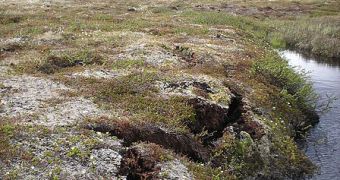Scientists say that under-assessment of the risks involved in thawing of perennially-frozen soils called permafrost has led to a distorted view of the amount of methane they could release in the atmosphere. These quantities have largely been underestimated, the team behind the new study believes.
In a paper published in the November 30 online issue of the top scientific journal Nature, researchers cover more than 41 previous studies on the effects of thawing permafrost. These soils contain large amounts of the carbon compound methane.
The thing about methane is that it's about 25 times more potent than carbon dioxide (CO2) in causing the greenhouse effect that leads to global warming. In the meta-analysis, the team discovered that permafrosts' contribution to climate change may in fact be 2.5 times larger than first calculated.
The research goes on to say that that the amount of methane released from Arctic soils will soon rival the one released by deforestation. When combined, these two sources put enough methane in the air to accelerate global warming well beyond current predictions.
“The implication is sobering. Whatever target we set for atmospheric CO2, this new research means we will need to work harder to reach it,” University of Florida ecologist Edward Schuur explains.
“When carbon starts being emitted from the permafrost, you can’t immediately say, ‘OK, we’ve had enough of this, let’s just stop doing it,’ because it’s a natural cycle emitting carbon whether you like it or not. Once we start pushing it, it’s going to be releasing under its own dynamic,” he adds.
At the same time, the processes on which current computer models rely on are incomplete, in the sense that not all factors influencing the release of methane from permafrost and other sources are fully understood. Yet, the more we learn, the more complex the issue becomes, PlanetSave reports.
In order to get a better understanding of how much permafrost-stored methane there actually is in the ground, imagine that it's twice the amount currently in the atmosphere. That is the equivalent of about 4 times the amount of carbon humans emit every single year through all their activities.
It's only ice and freezing conditions in the Arctic that keeps carbon locked inside the ground. As soon as the area begins to warm up, the soil will melt, and the carbon it contains will be released as methane.
This process will take place at its own pace, and produce its own positive feedback loops, which is to say it will become self-sustaining. Once started at a fast pace, it will take centuries to turn it off, as this is possible only through indirect action.
As such, the importance of fighting global warming right now is growing by the day. However, politicians are unwilling to recognize the magnitude of the crisis.

 14 DAY TRIAL //
14 DAY TRIAL //